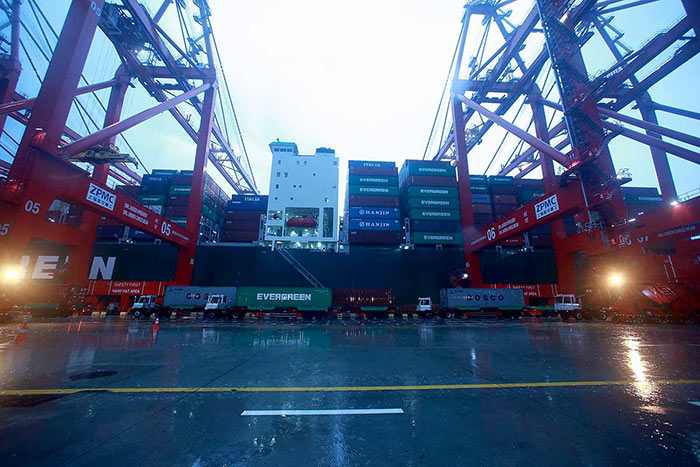Sri Lanka keen on enhancing connectivity with Indian ports

The Sri Lanka Ports Authority (SLPA) is keen on enhancing connectivity with Indian ports using ferry services to facilitate easier trade and tourism, its chairman Kavan Ratnayake said.
“If the two countries can set up a ferry service connecting Kankesanthurai port (KKS) in Jaffna with Karaikal near Puducherry, and similarly between Colombo and Tuticorin in south India, there is scope for increased trade activity and tourism,” he told The Hindu.
The ferry connection, he said, would primarily facilitate tourism and small-scale trade both ways. “It will help especially with Buddhist tourism from the south of the island, and by extension people-to-people connections,” he said. Further, the KKS Port will facilitate increased trade opportunities for communities living in proximity to the port and reduce the cost of road and rail transport for bulk items such as cement. In 2011, India and Sri Lanka launched a ferry service between Tuticorin and Colombo, but it was soon terminated after private operators running it said it was not commercially viable.
The proposals, according to the chairman, fit into the SLPA’s broader vision of developing Sri Lanka into a global logistics hub, given its strategic location in the Indian Ocean, in close proximity to key, international sea routes. Sri Lanka is currently upgrading the KKS harbour with Indian assistance of $45.27 million, through an agreement signed with the Export-Import Bank of India.
India’s role
India is also a partner in an initiative aimed at developing the East Container Terminal(ECT) at the Colombo Port. In May this year, Sri Lanka, Japan and India signed a Memorandum of Cooperation (MoC) to jointly develop the East Container Terminal (ECT) at the Colombo Port, at an estimated cost of up to $700 million.
The ECT has remained a contentious topic in Sri Lanka, with President Maithripala Sirisena’s voicing opposition to India holding majority stake or control in it. With Japan stepping in, with a more visible and active role, the initiative has acquired some momentum in recent months.
As per the agreement signed, Sri Lanka will have 51% stake in the terminal operating company, while the stakes to be held by Japan and India are being discussed, Mr. Ratnayaka said.
“The [joint] working group negotiating the specifics is scheduled to meet soon. If all goes as per schedule, we should have the cranes on the keys by August next year.”
India has for long been interested in partnering the development of the ECT, adjoining the Colombo International Container Terminal (CICT) that the SLPA runs as a joint venture with China Merchants Port Holdings Company Limited, that holds 85 % of the stakes in the partnership. With tall, Chinese-built cranes performing modern functions, the deepwater container terminal is the busiest among the three main terminals at the port and is equipped to handle large container vessels with efficiency, according to Port officials.
The adjacent ECT, which awaits upgradation, is expected to supplement this and boost traffic at the Colombo port. “The idea is to play as one port, with these different terminals catering to different market segments,” the chairman said. Of the total cargo arriving at the Colombo port, only 19 % accounts for domestic cargo. The remaining 81% is transhipment cargo, of which over 70% is linked to the Indian market.
The SLPA employs nearly 10,000 persons, and almost as many are employed by private companies operating at the port. The SLPA is investing LKR 1 billion to invest in a new IT system that could help manage vessel berthing schedules and traffic better, reducing waiting time.
“Our current efforts are geared towards developing this into a smart port with significant value addition in logistics. Sri Lanka’s location is God-given and there’s a lot we can offer to the region and the world,” Mr. Ratnayaka said.
(Source: The Hindu)
Latest Headlines in Sri Lanka
- Former CPC Chairman Dhammika Ranatunga granted bail by Colombo Court December 15, 2025
- Sri Lanka condemns Bondi Beach attack in Australia December 15, 2025
- Sri Lanka estimates USD 400 Million for railway reconstruction after Cyclone Ditwah December 15, 2025
- Large-scale drug trafficker arrested in Wattala with 21 kg of cannabis December 15, 2025
- Tragedy at Bondi Beach: Mass shooting at Jewish festival kills 15, injures dozens December 15, 2025


